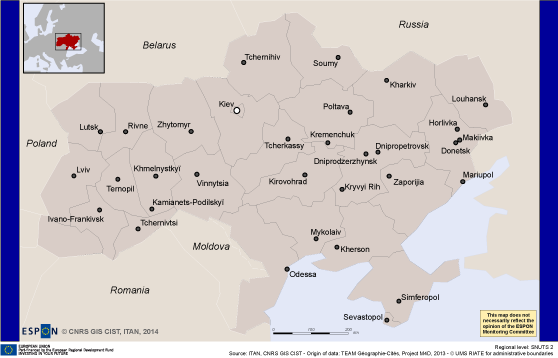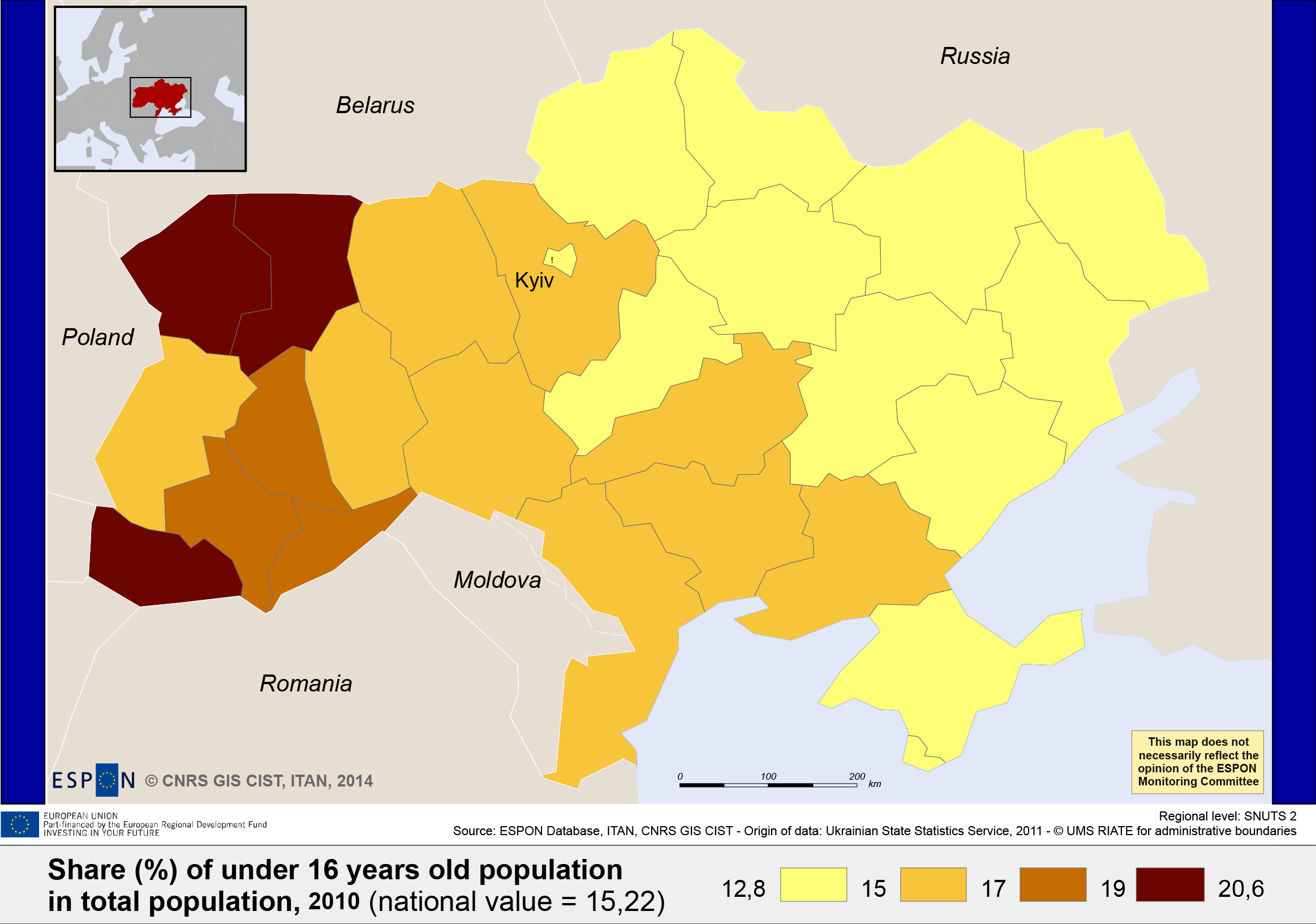2. Ukraine national territory: nation-building and cohesion undermining
Un autre aspect frappant de l’Ukraine des dix dernières années est la montée en puissance de la question régionale. Cette question est ancienne mais elle s’est intensifiée ces dernières décennies. Le pays n’existe dans ses frontières actuelles que depuis la Deuxième guerre mondiale. Avant cette période, l’Ouest de l’Ukraine n’avait jamais fait partie d’un pays commun avec les autres régions. Quant à la Crimée, elle n’a été rattachée qu’en 1954. En outre, et à la différence du cœur géographique du pays, les régions du Sud et du Sud-Est, particulièrement dans les villes, n’ont été peuplées par des colons ukrainiens et russes qu’à une période récente – fin XVIIe et surtout fin XIXe durant la révolution industrielle. Les disparités culturelles, économiques et politiques entre les régions sont donc rapidement devenues un problème clé de la jeune Ukraine indépendante.
Moreover, during the last decade territorial disparities have been deepening:
- The West still remains much less urbanised; its agriculture keeps an important share in GDP. The region suffers from under-equipment and is lagging behind national income average,
- The East possesses a strong industrial basis and concentrates the largest cities; it is richer than national average,
- The centre of the country has an intermediate position, except for the city of Kiev and its oblast that are the most dynamic territories, with numerous civil servants and a set of business services.
Intra-regional disparities are often more pronounced than those between regions. Like in other post-Soviet States, largest cities are in the most favourable situation, with a diversified economy and skilled labour. Industrial cities specialised in export branches of economy and oblasts administrative centres are also doing relatively well, while peripheral agricultural areas and small towns beyond urban regions, especially mono-industrial towns depending on one or two big factories in decline, suffer from drastic depopulation and poverty.All in all, the demographic dynamics is quite unfavourable.
Ukraine population has been steadily declining; nowadays it makes up 46 million people (its mid-1960s level), compared to 53 million in 1993. Reasons for this decline are both natural decrease, and emigration almost equally distributed between EU countries and Russia. During the 2000s, no single region in the country experienced a demographic growth, except the city of Kiev (Map 8).
Depopulation is particularly strong in the East (regions of Donetsk, Louhansk) and also in the oblasts of Chernihiv, Sumy, Poltava and Kirovohrad. This process is closely related to the aging of population. In the East and Crimea, the share of children under 16 dropped under 13% (Map 7). Most oblasts have a negative migratory balance. Few exceptions include first of all Kiev and its outskirts, and to a much lesser extent Odesa, Kharkiv, and Crimea with its sea resorts and the city of Sebastopol which, as a Russian naval base, has always had a specific status.





